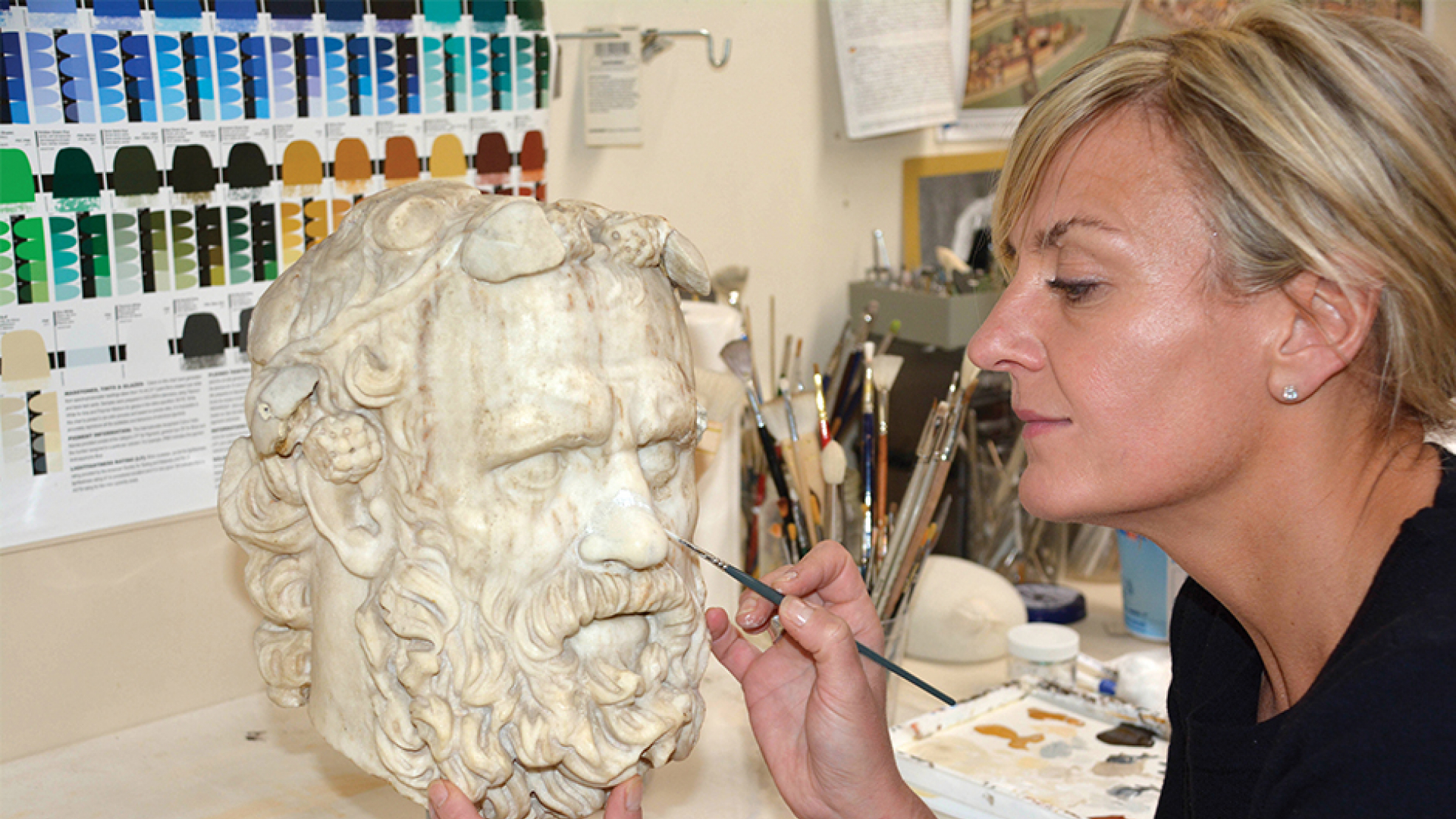How an ancient Greek statue found its way to our conservation lab
One of my colleagues in the Greek and Roman Art department was touring the galleries with her daughter when her daughter looked up into the face of Silenus and noticed that someone had taken a pencil to the figure’s mouth. I was called in to make an assessment, and after examining the sculpture, it became clear that the sculpture needs more work than just the removal of the graffiti.
Silenus has become soiled over the years while on view in the gallery at the hands of eager visitors and now requires restoration. What’s interesting is that it took a child’s vantage point to discover the graffiti disfiguration on Silenus, which then turned him into a bigger conservation project.
A fair amount of work is needed to restore the sculpture. I estimate that it will take more than 40 hours to remove the graffiti, clean the sculpture, and address the discoloured restorations. The overall treatment of Silenus may seem straightforward; however, cleaning treatments can be tricky.
Silenus is a companion to Dionysus, Greek god of wine and drunken revelry. He is perhaps the oldest, wisest, and most inebriated of Dionysus's thiasos (a band of attendants or followers). Engraving by C. Faucci, c. 1768, after G. B. Cipriani after P. Rubens. Iconographic Collections Keywords.
One must be very careful not to take the cleaning too far by over-cleaning. Furthermore, all efforts should be made to preserve the object’s patina. The patina is, in many ways, the most important aspect of an ancient work of art. It is a complex surface that has accrued over time, preserving important historical information in its surface. Not only does a patina have an aesthetic quality, imparting a certain beauty and warmth to a piece, but it also conveys information such as the sculpture’s age, its history, and the context of its passage through time.
Cleaning is a very subjective activity. How far should one go when cleaning? What is the acceptable level of cleanliness one would want to achieve? These questions need to be discussed at length with the curator, who, is ultimately responsible for how the sculpture should look and be presented.
An important tenet in conservation is the idea of reversibility, meaning to ensure that any intervention made can be reversed without damage. Cleaning is the one exception to this rule. It is a process that cannot be reversed. As such, the cleaning process should be carried out in a very careful and controlled manner, since once it is removed, the soiling cannot be put back on in the event of a mistake.



